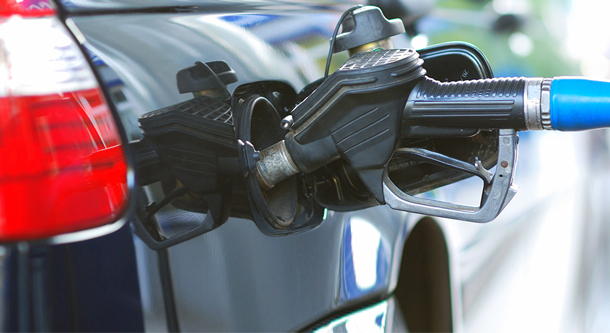
At $2.86, gas prices are at their highest point for an Independence Day holiday in four years. However, for the nearly 40 million motorists expected to travel this week, they will find prices at the pump 11-cents cheaper than this past Memorial Day holiday.
“The national gas price average has held fairly steady for the past 10 days, suggesting that U.S. demand is keeping pace with supply and stabilizing summer gas prices,” said Jeanette Casselano, AAA spokesperson. “However, elevated crude oil prices and other geopolitical concerns could tilt gas prices more expensive in the early fall despite an expected increase in global crude production from OPEC and its partners.”
AAA is tracking the following factors that will continue to impact pump prices through the fall:
- Domestic crude inventories: For the first summer driving season in five years, the U.S. has seen the largest one-week reduction (9.9 million bbl) in crude inventories. A consistent decline in supplies could spark higher gas prices.
- Crude production and exports: Refinery runs are at an all-time high and exports are at record levels, which impacts supply levels.
- Gasoline demand: The latest Energy Information Administration (EIA) data shows U.S. demand at 9.7 million b/d, one of the highest levels of the year, and could hit a new record with Independence Day holiday travel.
- Crude oil prices: Last week, crude oil hit $74/bbl – its highest level since 2014.
- Geopolitical concerns: Market observers are watching crude production levels in Libya and Venezuela amid economic woes in Venezuela, and details on the Iran sanctions all of which are influencing market prices.
“If U.S. demand remains strong, domestic and global supply decline and crude inventories continues to sell over $70/bbl, motorists may see the national gas prices average to potentially jump back up to nearly $3/gallon in coming months,” added Casselano.
Quick Stats
- The nation’s top 10 least expensive markets are: South Carolina ($2.53), Alabama ($2.53), Mississippi ($2.53), Louisiana ($2.57), Arkansas ($2.58), Oklahoma ($2.59), Tennessee ($2.60), Virginia ($2.60), Missouri ($2.60) and Texas ($2.64).
- The nation’s top 10 largest monthly decreases are: Delaware (-18 cents), Illinois (-16 cents), Indiana (-16 cents), Florida (-15 cents), Virginia (-15 cents), Maryland (-14 cents), Texas (-14 cents), Georgia (-13 cents), Iowa (-13 cents) and Nebraska (-13 cents).
West Coast
Motorists in the West Coast region are seeing the most expensive pump prices in the country: Hawaii ($3.73), California ($3.66), Washington ($3.43), Alaska ($3.41), Oregon (3.31), Nevada ($3.26) and Arizona ($3.02). However, the majority of prices in the region have declined since last week, with Nevada and Arizona seeing the largest decrease at three cents each. Only Oregon saw a slight one penny increase.
According to the EIA’s petroleum report for the week ending on June 22, gasoline stocks in the region fell by 300,000 bbl and now sit at 30.7 million bbl. However, inventories are 1.7 million bbl higher than they were at this point last summer, which will likely help prices stabilize if there are any major supply disruptions in the region this week.
Great Lakes and Central
The majority of motorists in the Great Lakes and Central region are seeing cheaper gas prices –up to three cents less — on the week. However, gas prices are noticeably on the rise in Ohio (+11 cents), Michigan (+10 cents), Indiana (+7 cents), Kentucky (+5 cents) and Illinois (+4 cents) following major decreases in these states at the pump the week prior. It is typical to see this type of volatility from week to week in the region. With the jump, Michigan’s ($2.99) is just a penny away from reaching the $3 threshold with Illinois ($2.94) not far behind.
While most gas prices are cheaper in the region on the week, they are extremely expensive compared to last July. Some Great Lakes and Central states are seeing gas prices that are close to 75-cents more than last year: Indiana (+71 cents), Michigan (+69 cents), Illinois (+65 cents), North Dakota (+64 cents), Kentucky (+63 cents), South Dakota (+63 cents) and Ohio (+63 cents).
On the week, gas prices saw mostly modest changes in the region as gasoline inventories added 600,000 bbl to total 63.2 million bbl, according to the EIA.
South and Southeast
Gas prices in the South and Southeast are seeing volatility on the week with Florida, Oklahoma and South Carolina seeing gas prices increase by three cents while New Mexico, Arkansas and Texas saw prices drop by two cents. All other states are seeing pump prices decline by a penny or remain stable from last Monday. South Carolina ($2.53) has the cheapest gas in the country and the region followed by: Alabama ($2.53), Mississippi ($2.53), Louisiana ($2.57), Arkansas ($2.58) and Oklahoma ($2.59).
Most motorist’s wallets in the region are feeling relief at the pump not just on the week, but on the month with gas price averages double-digits cheaper than just this past June: Florida (-15 cents), Texas (-14 cents), Georgia (-13 cents), Alabama (-12 cents), Mississippi (-12 cents) and South Carolina (-10 cents).
Gasoline inventories continue to register above 83 million despite of an EIA reported decline of 478,000 bbl contributing to the small changes in price at the pump. Overall, inventories are a healthy 784,000 bbl ahead of levels reported this time last year.
Mid-Atlantic and Northeast
On the week, motorists in West Virginia (+3 cents) and Washington, D.C. (+2 cents) were the only states in the Mid-Atlantic and Northeast region to see gas prices increase. Rhode Island (-2 cents) saw the largest decrease while other states saw pump prices drop by a penny or remain stable since last Monday. In the region, Connecticut ($3.08), New York ($3.01), Washington, D.C. ($3.01) and Pennsylvania ($3.01) carry the most expensive state gas price averages.
The U.S. Environmental Protection Agency has announced a decision to change the Air Quality Plan and eliminate the low-grade summer gasoline (7.8-lb RVP) mandate during the May 1 – Sept 15 summer driving season for six western Pennsylvania counties. This type of gasoline is more expensive to produce as compared to winter-blend. The impacted counties include Armstrong, Beaver, Butler, Fayette, Washington and Westmorland counties. The lift of the mandate is set to go into effect August 14, pending any objections. However, it is unclear if suppliers will deliver the lower grade gasoline into the market this summer.
With a build of 1.2 million bbl, the Mid-Atlantic and Northeast region saw the largest build of any in the country. Sitting at 67 million bbl, inventory measures at the highest level since June 2017. The higher inventory levels are contributing towards cheaper gas prices.
Rockies
Idaho ($3.17), Utah ($3.17) and Wyoming ($2.97) rank among the top 15 states with the highest gas price averages in the country this week. Wyoming’s gas price jumped two cents and Colorado’s one-cent to $2.85 on the week.
Wyoming (+5 cents) and Utah (+2 cents) are the only states in the region to see more expensive gas prices compared to last month while gas prices are cheaper in Colorado (-6 cents), Idaho (-2 cents) and Montana (-2 cents).
With a small 86,000 build, inventory levels in the Rockies region sit above 7 million bbl for a second week. Inventories typically measure between 6-7 million bbl during the summer driving season.
Oil market dynamics
At the close of Friday’s formal trading session on the NYMEX, WTI increased 70 cents to settle at $74.15. Crude prices reached new highs not seen since 2014 following a number of developments that will impact supply in the coming months. These include: OPEC confirming that it will work with its partners to produce a record high 11 million barrels per day of crude in July: the U.S. seeking greater crude oil sanctions on Iran; and the continuing economic crisis in Venezuela.
Moreover, crude prices spiked this week after EIA’s weekly report revealed that for the first summer driving season in five years, the U.S. has seen the largest one-week reduction (9.9 million bbl) in domestic crude inventories. Crude inventories now sit at 416.6 million bbl. When compared to this time last year, total crude inventories around the country are lower by 92.6 million bbl. The market will watch supply and demand closely in July for indicators that increased crude production from OPEC and its partners has helped to meet growing global crude demand. If it appears that supply remains tight amid high demand, prices may continue to climb.
In other news, the U.S. oil rig count dropped by four last week, according to Baker Hughes, Inc., bringing the total number of rigs to 858. However, there are still 102 more rigs now than a year ago.
Motorists can find current gas prices along their route with the free AAA Mobile app for iPhone, iPad and Android. The app can also be used to map a route, find discounts, book a hotel and access AAA roadside assistance. Learn more at AAA.com/mobile.



